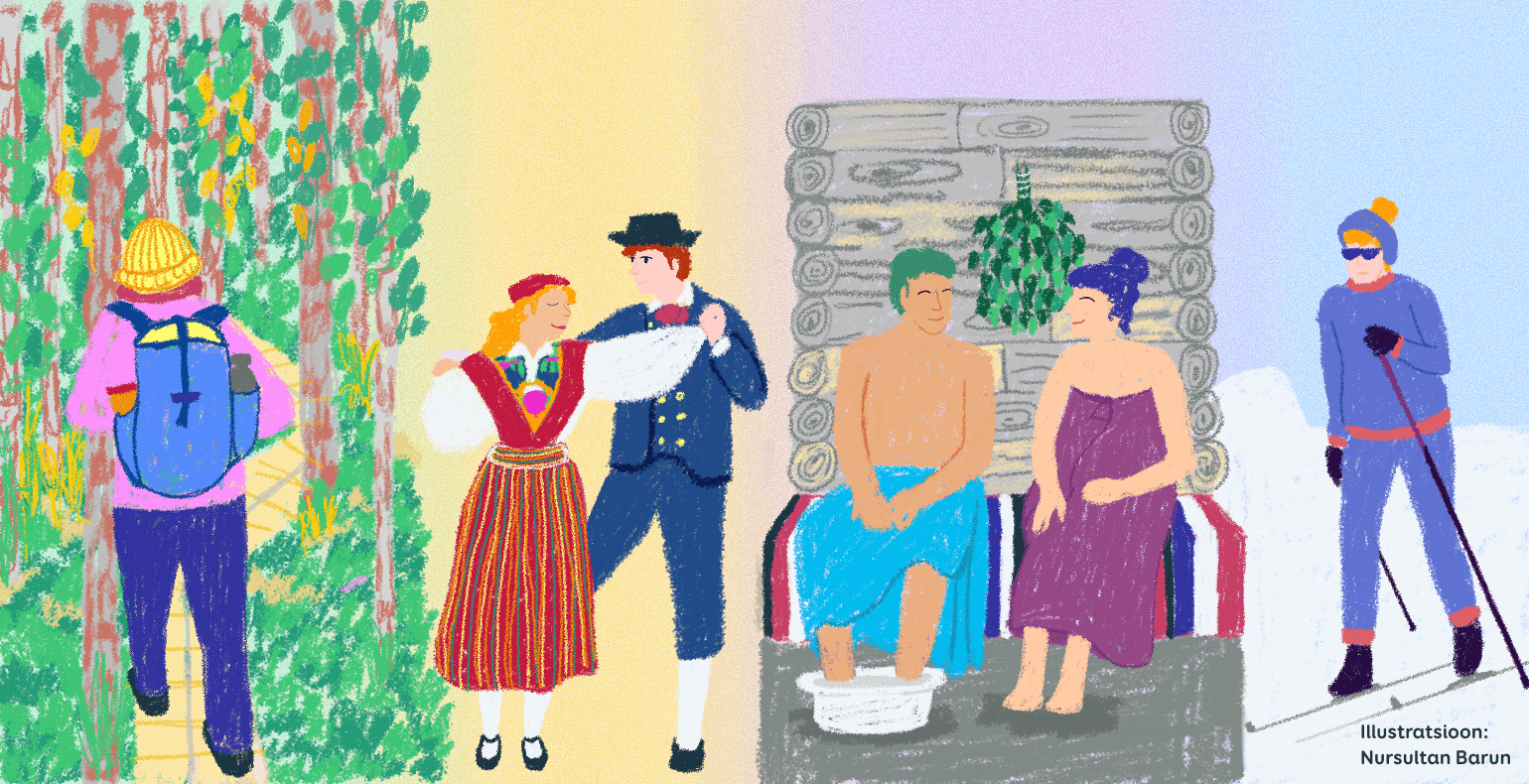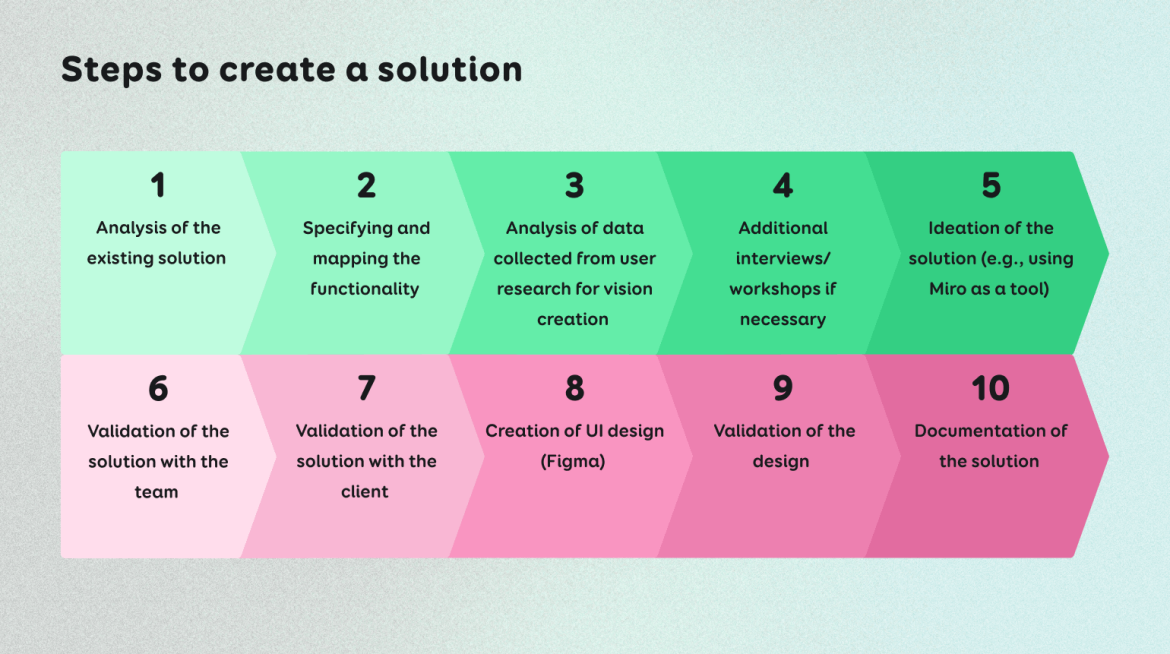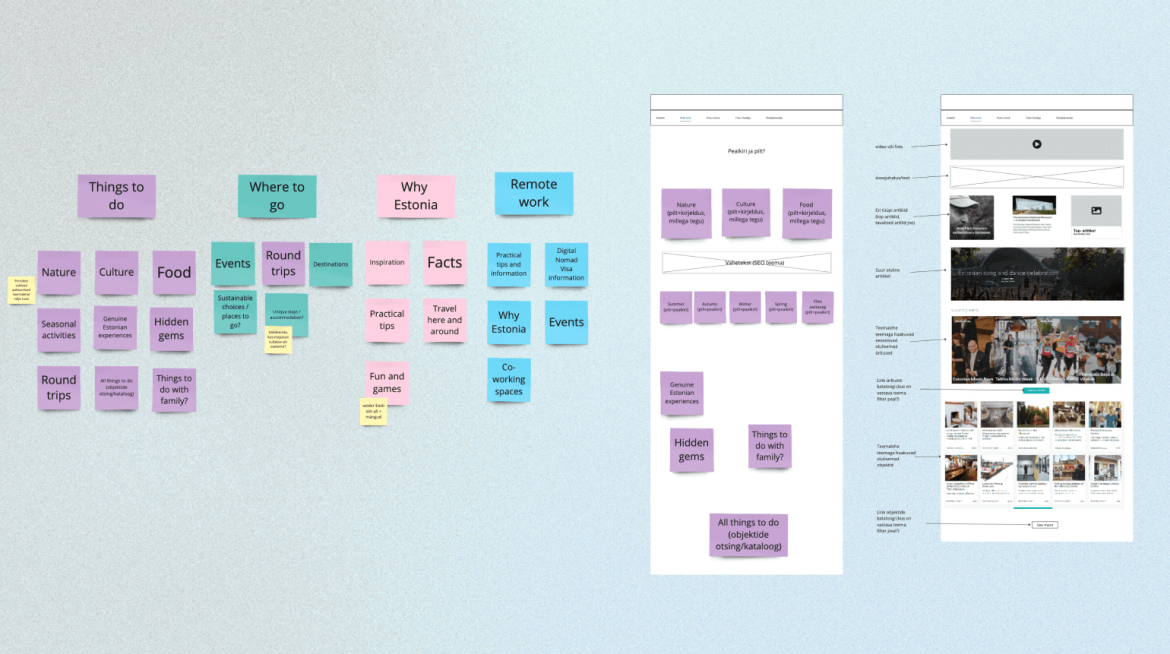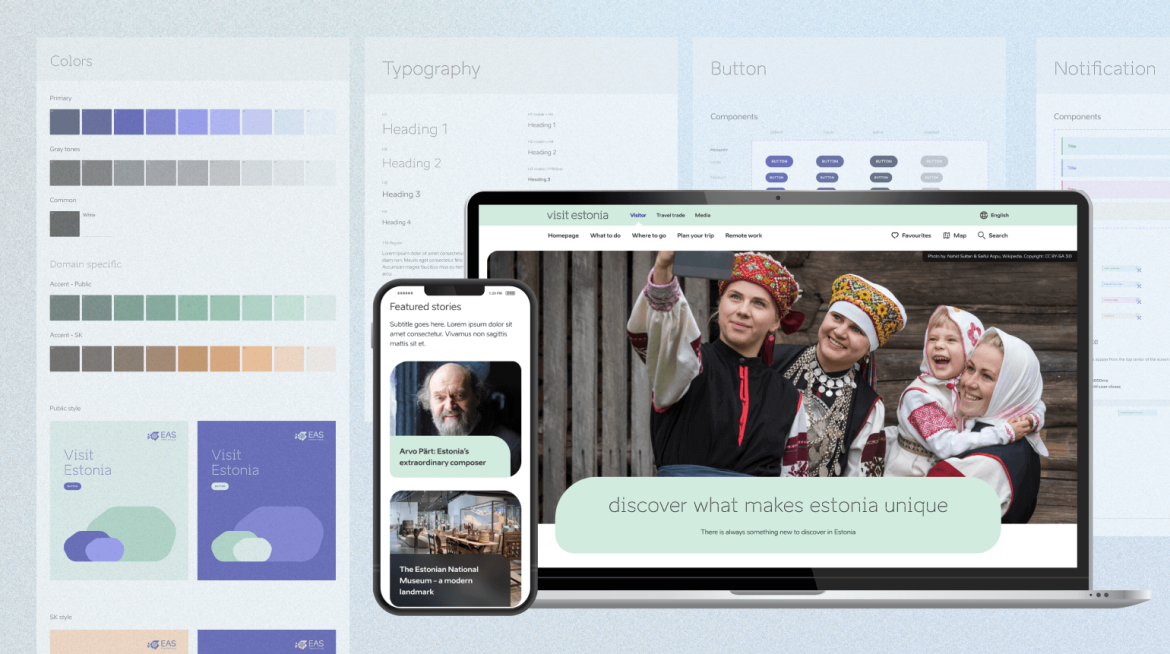Updating the existing system: the case of Tourism Information System 2.0 (Kuldmuna - 3rd place)
The development project of the new Visit Estonia portal was awarded third place in the Website category at the 2025 Kuldmuna competition. The recognition was given for a solution that combines user experience, visual design, and clear purpose into a cohesive whole. The portal inspires exploration through content that is presented in an aesthetically thoughtful and user-centred way. It demonstrates that collaborative digital solutions create value for both the client and the end user.
This article discusses what it means to create a new version of an existing solution, how such a project is executed, which roles are involved, and what potential challenges exist.
Every such project begins with assembling a team. In this case, Trinidad Wiseman involved UX designers, a business analyst, and a UI designer, while AS Datel was responsible for the development team activities. This was a collaborative project, whose aim was to create new versions of the Visit Estonia website (managed by the joint institution of EAS and KredEx), and its specialist environment necessary for content management.
Before diving into the project activities, let's familiarise ourselves with the roles and their responsibilities.
The UX designer, or user experience designer, gets to know the end users and their needs, and creates a solution concept taking all learned insights into account (see figure 1 below.) User experience design is often intertwined with service design.
During the project, the best possible integrated solution is created, taking business constraints also into account. The work of UX designers serves as input for both business analysts and UI designers and helps the client understand whether they are on the right track towards the desired solution.
The business analyst conducts an analysis of functionalities, considering the UX designer's creations, the previous situation, and business decisions and desires; and documents all of these solutions in a structured and unambiguous way.
The UI designer creates the user interface’s visual design, which is user-friendly, attractive, and meets the expectations of the target group. The UI designer is also responsible for the project's unified visual language and therefore creates and manages a design system (UI kit) for this purpose.
The output of the UI designer's work is used in their daily tasks by both front-end developers and business analysts and system analysts. For more information, read our recommendations in the article "When to choose UX for your project, when UI designer?"
All previously described roles collaborate closely in creating the final solution; in this project, cooperation worked excellently.
The next step after forming the team is establishing an unambiguous goal. However, what to do if the vision of the solution being created is unclear?
Here, our experienced and diverse team of designers steps in to help. In the Tourism Information System 2.0 project, we initially worked on creating the general vision and together with the client, we clarified the direction we wanted to move in. We began the phase of creating the vision with end-user interviews to understand the current situation and the pain points, wishes, and needs of the users.
Based on the interviews, we supplemented and modified the existing personas of Visit Estonia's website, including those of the specialist environment, which are one of the cornerstones of the project's overall success. In addition to end-user interviews, we also conducted interviews with key stakeholders to map potential constraints and to understand business expectations and desires.
After conducting the interviews, we started workshops, during which we mapped out 6 persona journeys with approximately 20 key stakeholders. The goal of mapping customer journeys in the workshop is to identify users' future (to-be) step-by-step service usage journey, specify user needs, and interface functionalities.
An important step in creating the vision is to understand the general market situation and to learn about competitors and their solutions. We benchmarked similar websites, which helped us get closer to creating a vision for the future. This process also analysed which solutions do not work or require too many resources.
One of the project's first activities is creating the navigation for the new environment. For this, we mapped the current, as-is navigation in the existing solution, analysed it, and created a new to-be navigation.
The end result of this phase was the vision document for Tourism Information System 2.0, which helped all stakeholders involved in the project maintain a common approach and make informed management, design, and development decisions when creating the new environment.
Once the direction and principles are set, it is necessary to define the scope and action plan.
Defining the scope helps to think through and map out all project activities and break them down into smaller stages (e.g, on a quarterly basis). This division of work helps to manage business expectations, plan activities, and allocate resources. It also provides a good overview of whether timelines and planned scopes are being adhered to. Deviations from the initial plan become visible earlier, allowing necessary adjustments in project management plans to be implemented early on.
After the tasks have been distributed, it is the right time to start creating solutions.
The following activity distribution plan worked well in creating solutions:
As the illustration shows, it is important to first clarify the current situation, specify the necessary functionalities, and analyse the information received from users. If the information collected is inaccurate, it is necessary to identify the appropriate stakeholders to request further details from.
This is sufficient to proceed to ideation, resulting in a draft solution (see Figure 1 below). The sketch can be further refined and improved, validating it internally within the team and later with the client. Subsequently, the created sketch receives its final appearance during the UI design process (see Figure 2 below).
In the process of creating solutions, it is crucial to test the developed solutions on end-users. To validate the most important user journeys, we conducted user tests. After the tests, the created solution can be adjusted before it moves into development for implementation.
Figure 1 UX input from the perspective "What to do"
Figure 2 UI output from the perspective "What to do"
Sounds like the project was perfect and proceeded without any challenges!
No project is perfect, and challenges are a part of daily work, but every problem has a solution. In a large-scale project with multiple stakeholders, it takes time and resources for the entire team involved to start working in unison. Therefore, it is particularly important to focus not only on the daily project work, but also on fostering teamwork and mutual trust. Here, transparency, clear task allocation, and building effective communication is the key.
"Trinidad Wiseman has been a professional and versatile partner! They have assisted us with user research, business analysis, and web design. They always think along with us on both business logic and technological issues and proactively offer solutions. Trinidad Wiseman helped us better understand the end users of the Visit Estonia information system, making the updated environment more intuitive, user-friendly, and easier to navigate." - Karina Kask, Development Manager of the Tourism Information System
When the team’s business side has recently undergone significant changes, we can step in and work with user experience designers to create a unified vision of the service as a whole. This way, all involved parties gain the necessary knowledge. In the project, various business representatives can share their knowledge, visions, and understandings and solution creators gather valuable insights to create the most suitable solution.
Decision points about which path to choose often arise when new and existing realities intersect. In such cases, forming smaller groups with varying decision-making competencies works well. For instance, it is a good practice that in addition to the working group, which makes ongoing decisions, there is also a steering group that takes more complex decisions and helps the working group maintain and choose the desired direction at critical moments.
In summary, even if there is a wish to create a new solution based on an existing system, several preliminary activities are needed to achieve great results. By investing in user research, we can develop solutions that offer excellent user experience.
At Trinidad Wiseman, we support you throughout the entire process – from mapping end-user needs and business objectives to developing prototypes, design systems, and user-friendly solutions. Our UX and UI designers, service designers, analysts, and developers work as one team to deliver well-considered and effective outcomes. Learn more about our design approach and our business and pre-analysis services on our website. If you’d like to ask for advice or discuss your project, feel free to get in touch.










